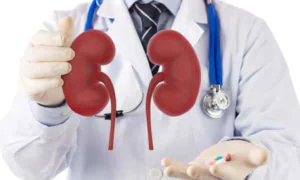
Introduction
Pyrexia, commonly known as fever, is a physiological response triggered by the body to combat infections, illnesses, or underlying health conditions. Fever can be a symptom of various diseases, including malaria and dengue. In this article, we will delve into the causes and symptoms of pyrexia, explore the connections between fever and malaria or dengue, and discuss the importance of early diagnosis and appropriate management for these conditions.
Understanding Pyrexia
Pyrexia is characterized by an elevated body temperature, often above the normal range of 98.6°F (37°C). It is the body’s natural defense mechanism in response to infections, inflammation, or other medical conditions. When the immune system recognizes the presence of pathogens, it releases chemicals that signal the hypothalamus, the body’s temperature-regulating center, to increase the body’s temperature. This elevated temperature creates an inhospitable environment for the pathogens, aiding in their eradication.
Malaria: A Brief Overview
Malaria is a life-threatening disease caused by Plasmodium parasites transmitted through the bite of infected female Anopheles mosquitoes. The common symptoms of malaria include high fever, chills, headache, muscle aches, and fatigue. If left untreated, malaria can lead to severe complications and even death. Prompt diagnosis through laboratory testing and appropriate treatment with antimalarial medications are crucial for managing malaria effectively.
Pyrexia Dengue: A Brief Overview
The dengue virus is the cause of dengue fever, a viral ailment spread by mosquitoes. Tropical and subtropical regions are prone to it. Dengue fever typically presents with symptoms such as high fever, severe headache, joint and muscle pain, rash, and fatigue. In severe cases, dengue can progress to dengue hemorrhagic fever or dengue shock syndrome, which can be life-threatening. Early diagnosis, supportive care, and management of complications are vital in treating dengue fever.
Connection between Pyrexia and Malaria/Dengue
Malaria and dengue fever are two common causes of pyrexia, particularly in areas where these diseases are endemic. Both infections result in high fever and flu-like symptoms, making it essential to differentiate between them for appropriate treatment. Laboratory tests, such as blood smears for malaria or serological tests for dengue, are utilized to confirm the diagnosis.
Management and Prevention
Seek Medical Attention: If you experience persistent high fever, it is crucial to consult a healthcare professional for accurate diagnosis and appropriate viral pyrexia treatment in coimbatore. Early detection and intervention can prevent complications associated with malaria and dengue.
Antimalarial and Antiviral Medications: Specific antimalarial medications are prescribed to treat malaria, while there is no specific antiviral treatment for dengue. Supportive care, including rest, hydration, and pain relief, is typically recommended for managing dengue fever.
Mosquito Control Measures: Preventing mosquito bites is crucial in reducing the risk of malaria and dengue. Use mosquito repellents, wear protective clothing, and ensure the elimination of stagnant water sources to minimize mosquito breeding grounds.
Malaria Prevention: In malaria-endemic regions, preventive measures include taking antimalarial medications prescribed by healthcare professionals, sleeping under insecticide-treated bed nets, and using indoor residual spraying to repel mosquitoes.
Dengue Prevention: Preventing dengue involves minimizing mosquito breeding sites, using mosquito nets, and practicing proper vector control measures. Public health efforts, such as community education and awareness campaigns, are crucial in preventing dengue outbreaks.
5 Effective Tips to Tackle Viral Fever
Viral fever is a common illness that can cause discomfort and disrupt daily life. While it typically resolves on its own, there are steps you can take to alleviate symptoms and promote a speedy recovery. In this article, we will explore five practical tips to help you tackle viral fever and get back on your feet.
Rest and Hydration: When battling viral fever, your body needs ample rest to recover. Make sure to get plenty of sleep and take frequent breaks throughout the day. Hydration is also crucial as fever can cause fluid loss through sweating. Drink plenty of water, herbal teas, or clear broths to replenish fluids and prevent dehydration. Avoid caffeine and alcohol as they can dehydrate the body further.
Manage Fever with Medication: Over-the-counter fever-reducing medications, such as acetaminophen or ibuprofen, can help alleviate discomfort and reduce fever. Follow the recommended dosage instructions and consult a healthcare professional if you have any concerns or if your symptoms worsen. It’s important to note that these medications address symptoms and do not treat the underlying viral infection. Constantly seek the advice of a medical professional for an accurate diagnosis and treatment strategy.
Apply Cool Compresses: To bring down a high fever and relieve discomfort, use cool compresses. Wet a clean cloth with cool water and apply it to your forehead, wrists, or the back of your neck. This can help lower body temperature and provide temporary relief. Avoid using cold or icy water, as it may cause discomfort or chills.
Maintain a Nutritious Diet: Eating a balanced diet rich in nutrients is essential for supporting your immune system and aiding recovery. Your meals should contain a variety of fruits, vegetables, nutritious grains, and lean proteins. Focus on foods that are easily digestible, such as soups, stews, and steamed vegetables. Avoid heavy, greasy, or processed foods that can be harder to digest and may worsen symptoms. If your appetite is reduced, try eating small, frequent meals throughout the day rather than large portions.
Practice Good Hygiene and Preventive Measures: To prevent the spread of viral infections and protect yourself and others, follow good hygiene practices. Clean your hands regularly preferably before consuming food or touching your face, for at least 20 seconds with soap and water. Cover your mouth and nose with a tissue or your elbow when coughing or sneezing, and dispose of tissues properly. Avoid close contact with others while you are contagious to prevent transmission.
Dealing with viral fever can be challenging, but by following these tips, you can effectively manage symptoms and support your recovery. Remember to prioritize rest, stay hydrated, and seek medical attention if necessary. With time, proper care, and patience, you’ll be able to overcome viral fever and regain your health.
Pyrexia Conclusion
Pyrexia, or fever, is a common symptom associated with various infectious diseases, including malaria and dengue. Understanding the connection between fever and these conditions is essential for early diagnosis, appropriate treatment, and prevention. Seeking medical attention, practicing mosquito control measures, and adhering to preventive strategies can significantly reduce the burden of malaria and dengue. By prioritizing early detection and prompt management, we can ensure better outcomes for individuals affected by these diseases and contribute to their overall well-being.






